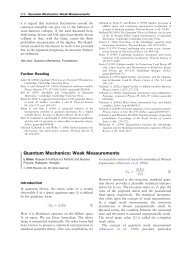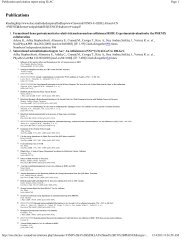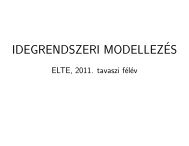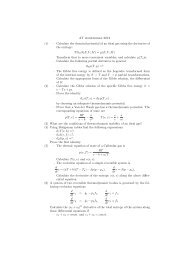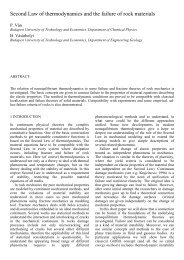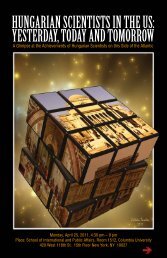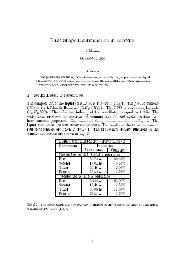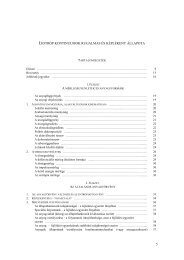Gauge/gravity duality: an overview Z. Bajnok
Gauge/gravity duality: an overview Z. Bajnok
Gauge/gravity duality: an overview Z. Bajnok
Create successful ePaper yourself
Turn your PDF publications into a flip-book with our unique Google optimized e-Paper software.
Qu<strong>an</strong>tum electrodynamics<br />
Relativity theory: A µ = (Φ, A)<br />
electric + magnetic int: F µν<br />
+Qu<strong>an</strong>tum theory→ QED<br />
U(1) gauge theory: A µ (x) → A µ (x) + ∂ µ Λ(x)<br />
electron<br />
electron<br />
photon<br />
L = −4 1 F 2 + ¯Ψ(i∂/ − m)Ψ − e ¯ΨA/Ψ<br />
experiment: µ = g2mc e s where g = 2(1 + a)<br />
Gabrielse et.al.: a = 1159652180.85(.76) × 10 −12<br />
Feynm<strong>an</strong>: If you w<strong>an</strong>t<br />
to learn about nature,<br />
to appreciate nature,<br />
it is necessary to underst<strong>an</strong>d<br />
the l<strong>an</strong>guage<br />
that she speaks in.<br />
Qu<strong>an</strong>tum<br />
gauge theory<br />
perturbation theory:<br />
Feynm<strong>an</strong> graphs<br />
α<br />
2π =<br />
2πc e2 = 0.001161 = + +...<br />
g<br />
2<br />
= 1 − 1.3140 α 2π<br />
momentum-dependent coupling:<br />
(127) −1<br />
β(α) = µ ∂α<br />
∂µ > 0 (137) −1<br />
Μ Ζ<br />
α<br />
5




